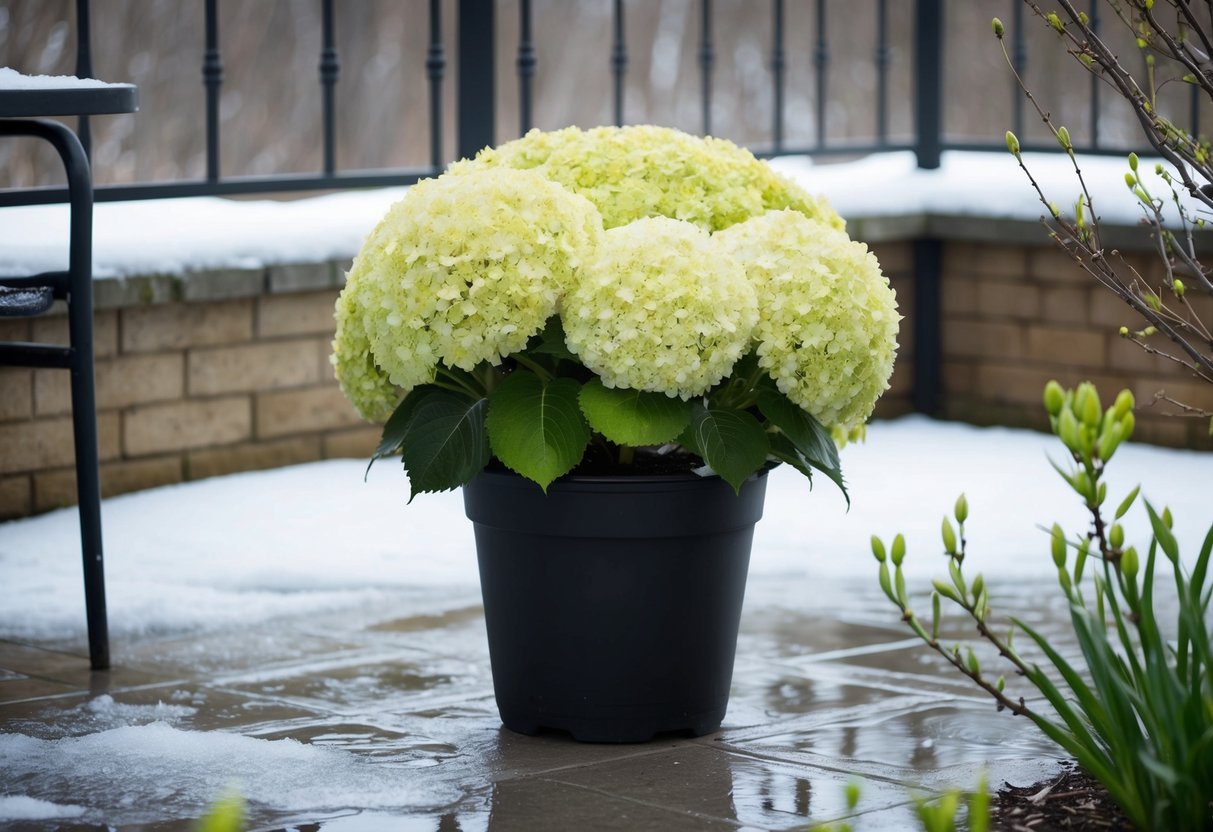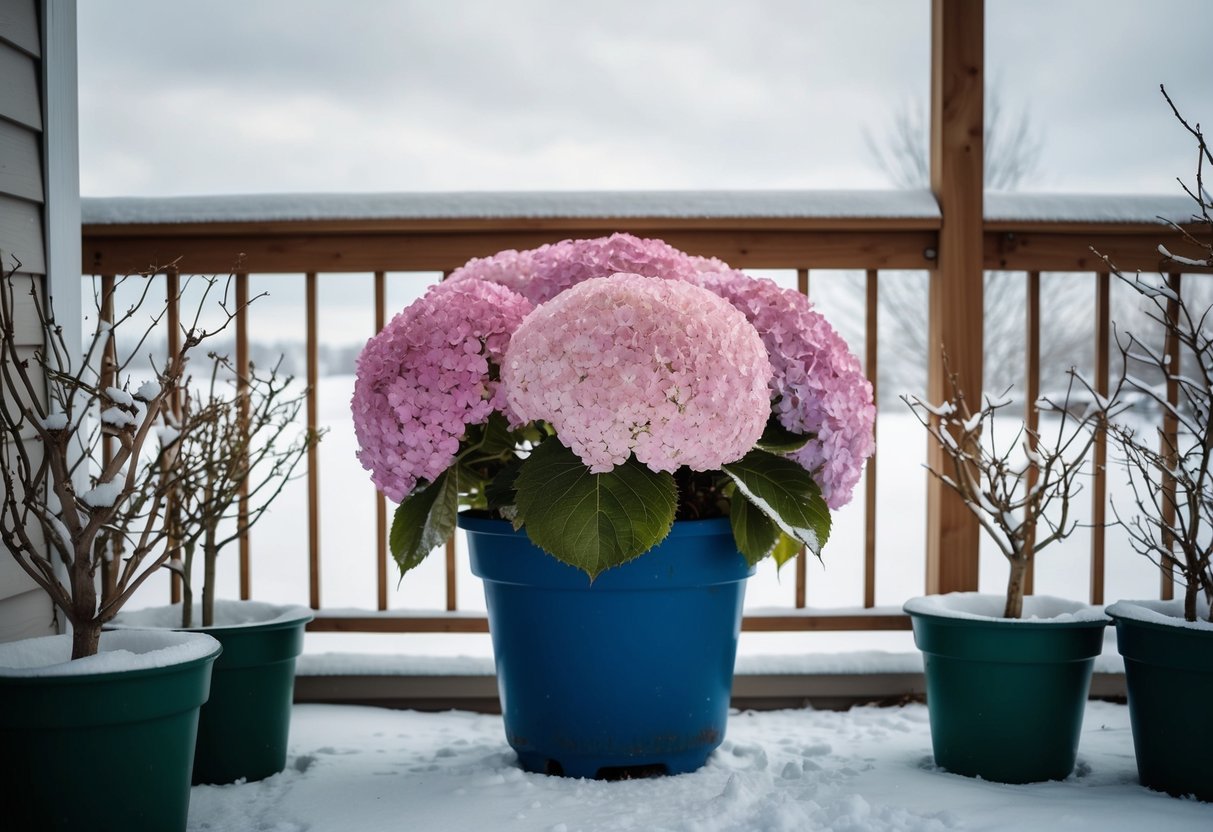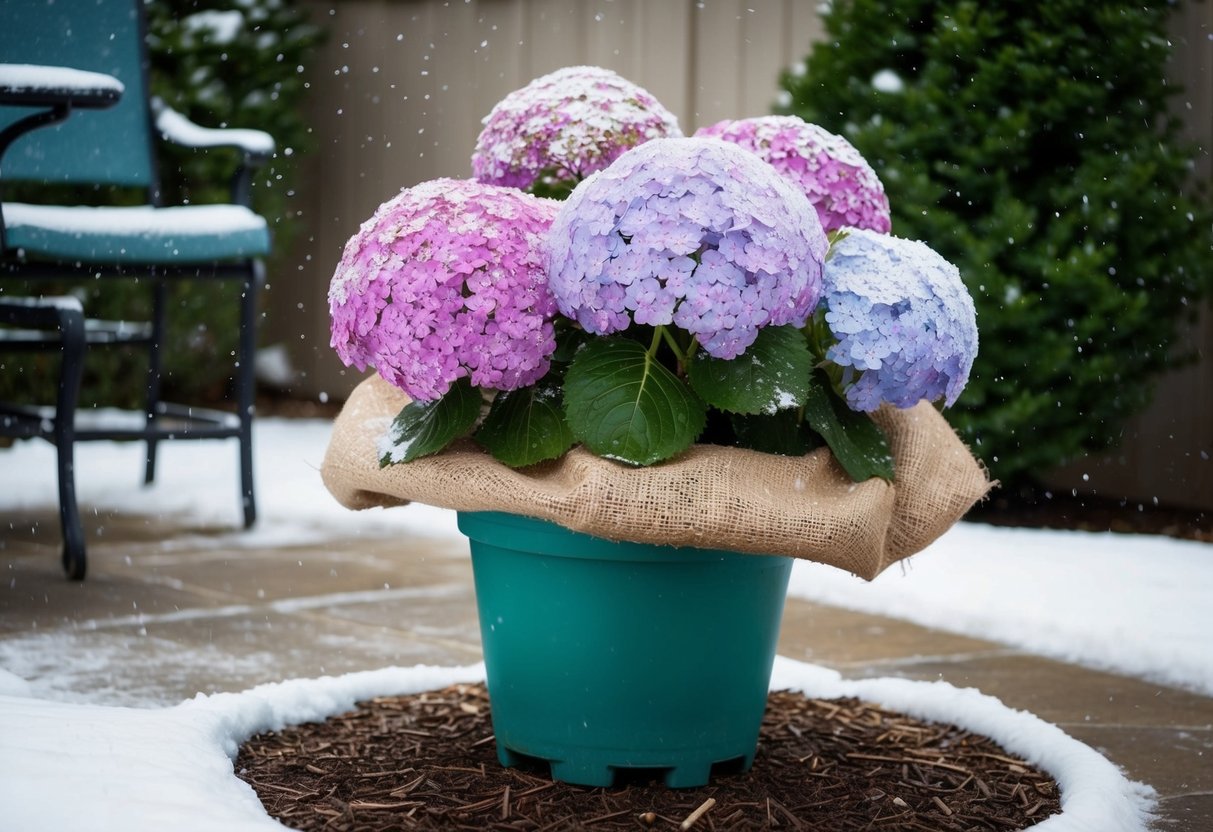Can I Leave My Potted Hydrangea Outside After Winter? Tips for Thriving Spring Growth
Wondering if you can leave your potted hydrangea outside after winter? It’s a common question for plant lovers. Hydrangeas are known for their beautiful blooms, but winter conditions can be tough on them.
In many cases, you can move your potted hydrangeas outdoors after the cold months. Just be sure that the risk of frost has passed.

Taking care of your hydrangeas during the winter is crucial. Protecting them from extreme cold helps them thrive when they’re back outside.
Overwintering techniques like mulching or moving them to sheltered spots can make a big difference. Once the climate is favorable, you’ll see your plants bouncing back and ready to display their vibrant colors.
Paying attention to local weather and gradual temperature shifts makes a big impact. If your area has mild winters, your hydrangeas might handle outdoor life all year long. However, colder climates demand more attention to keep these beauties healthy, so be on the lookout for the best time to reintroduce them to the garden.
Understanding Hydrangea Winter Hardiness

Hydrangea winter hardiness depends on the variety and your local growing zone. Some hydrangeas handle cold better than others, making it important to identify your plant type and know your climate conditions. This will guide you in making the best decision for keeping your potted hydrangea healthy through the winter.
Identifying Your Hydrangea Variety
Knowing your hydrangea variety is key to understanding its winter hardiness. Some common varieties like Hydrangea macrophylla and Oakleaf hydrangeas have different cold tolerances.
Hydrangea macrophylla, often called bigleaf or mophead hydrangea, generally has less cold tolerance. It might need more protection in colder climates. Endless Summer hydrangeas are a type of macrophylla known for their repeat blooming. They can be left outside in milder winters, with proper care.
Oakleaf hydrangeas are typically hardier and can survive colder temperatures. Identifying your hydrangea type helps you decide on the right care strategy for the winter months.
Knowing Your Growing Zone
Your growing zone, from the USDA plant hardiness map, helps determine the specific needs of your hydrangeas during winter. Zones range from 1 to 13. Each zone represents a region with its own temperature range.
For example, macrophylla hydrangeas do well in zones where temperatures don’t go below -10°F. Oakleaf hydrangeas may tolerate even colder zones. Knowing your zone helps protect your hydrangeas better. Consider moving potted hydrangeas to sheltered spots if you live in colder zones.
Always check if your variety can handle your climate conditions before deciding whether it can stay outside.
Preparing for Overwintering

Preparing your potted hydrangeas for winter is essential to ensure their survival. Key steps include timing the winterizing process and choosing proper materials for insulation. By taking these actions, you can help protect your plants from harsh conditions.
When to Start Winterizing
Begin winterizing when nighttime temperatures start approaching the 30s or 40s Fahrenheit. This is crucial to prevent frost damage.
Moving your hydrangeas to a sheltered location like a porch can offer extra protection. It’s important to monitor local weather forecasts so you can act promptly.
Bringing them into an unheated garage or basement can be a good option to shield them from cold winds.
Selecting the Right Insulating Materials
Choosing the right materials is vital for effective insulation and winter care. Materials like burlap, oak leaves, and hay are excellent for covering and protecting your plants.
Burlap can be wrapped around pots to retain warmth, while oak leaves or hay can be used to surround the base. This added layer helps insulate the roots from freezing temperatures.
Consider using a combination of these materials to provide comprehensive protection and increase the chances of healthy plants in spring.
Executing Winter Care Techniques

Taking care of your potted hydrangeas during winter ensures they thrive come spring. Key techniques include using mulch for insulation, protecting against harsh winds, and maintaining the right level of moisture before freezing temperatures set in.
Practical Mulching Strategies
Mulching is essential for insulating the roots of your potted hydrangeas during winter. Use bark mulch as it provides excellent insulation against cold temperatures.
Spread a thick layer of mulch around the base of the plant, making sure to cover the soil surface in the pot. This layer helps retain soil moisture and acts as a barrier to temperature fluctuations.
If you live in an area with harsh winters, adding an extra layer of mulch can be beneficial. Consider using materials like straw or shredded leaves to enhance insulation.
Just be sure not to cover the base of the plant too heavily, as excessive mulch can trap moisture and lead to root rot.
Implementing Wind Protection
Winter winds can be harsh on potted hydrangeas, potentially causing damage to both foliage and pots. Creating a windbreak is a simple way to protect your plants.
Use chicken wire to construct a cage around the pot and fill it with leaves or straw to shield against cold blasts.
Position your pots in sheltered areas, such as against a wall or under a patio cover, where they can be shielded from wind.
If possible, you can also move your hydrangeas indoors to a garage or basement to completely avoid exposure to severe winter winds. Just ensure these spaces are unheated to prevent premature budding.
Watering Before the Freeze
Hydration is vital for your hydrangeas before temperatures drop. Water your potted hydrangeas thoroughly before the first hard freeze to ensure there is adequate soil moisture.
This helps the roots stay hydrated over the winter months.
Be cautious not to over-water, which can lead to waterlogged soil and root damage.
Check soil moisture regularly. Underwatering can be just as harmful as overwatering.
You should aim to keep the soil slightly damp throughout the winter, allowing the roots to access the necessary hydration without suffocating them. Balancing moisture ensures your hydrangeas emerge healthy in the spring.
Monitoring and Maintenance

To keep your potted hydrangea healthy after winter, focus on the right watering schedule and keeping an eye out for pests and diseases. These actions will help ensure vibrant blooms and robust growth throughout the growing season.
Adjusting Watering Schedules
As temperatures rise, your hydrangea will need more water to thrive. Hydration is key, especially after dormancy.
Keep the soil consistently moist, but avoid waterlogging. Begin adjusting your watering schedule as soon as new growth appears.
Increase frequency gradually, particularly if conditions become warmer or drier.
Humidity can also affect how much water your hydrangea needs. If your area tends to be dry, consider using a humidity tray or misting leaves occasionally.
A general rule is to water your hydrangea when the top inch of soil feels dry. Make sure pots have good drainage to prevent root rot.
Checking for Pests and Diseases
After winter, it’s crucial to watch out for pests like aphids or spider mites. Inspect the leaves and stems regularly for any signs of infestation.
These pests can damage your hydrangea, leading to wilting or stunted growth. If you spot any pests, treat your plant with insecticidal soap or neem oil.
Diseases such as powdery mildew or root rot can also affect your hydrangea. Look for white powder on leaves or yellowing foliage as a warning sign.
To prevent these issues, maintain good airflow around the plant and avoid overhead watering. If necessary, remove affected parts to stop the spread of disease.
Regularly checking your plant will help you catch problems early and keep your hydrangea healthy.
Post-Winter Care and Transition

After winter, your hydrangea needs specific care to thrive. You should evaluate its condition and prepare it for the warmer months ahead. Key tasks include checking for damage and setting up a seasonal care routine.
Assessing Winter Impact
Begin by examining your hydrangea for any winter damage. Cold temperatures may have affected the leaves and stems.
Look for signs such as broken branches or brown, wilted leaves. Remove any dead or damaged parts to encourage new growth.
Next, check the soil. Make sure it’s not waterlogged. Hydrangeas prefer moist but well-drained conditions.
Give the plant a gentle shake to loosen compacted soil and allow air to reach the roots. This is a good time to determine if the pot is too small and if the plant needs a transplant to a bigger one.
Planning for Spring Rejuvenation
As temperatures rise, focus on rejuvenating your hydrangea. Start with a balanced organic fertilizer to replenish nutrients. Use one that includes potassium, phosphorus, and nitrogen for healthy growth and vibrant blooms.
Create a consistent watering schedule. Hydrangeas need about 4 gallons of water per week. Ensure the water drains well to prevent root rot. If needed, amend the potting soil with compost to improve moisture retention.
Monitor the development of flower buds. These are vital for summer blooming. Protect them from late frost by covering the plant if temperatures drop unexpectedly. With the right care, your hydrangea will transition smoothly into spring.







